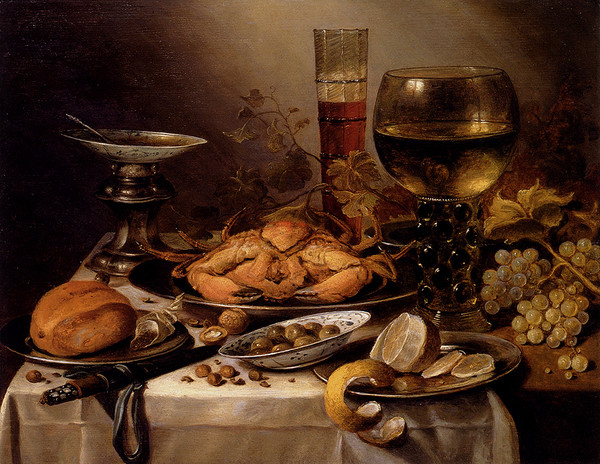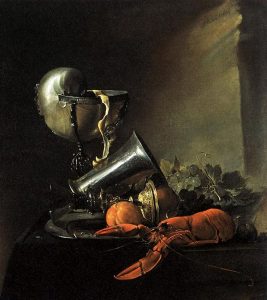
Still life is one of the most demanded genres of painting. The origins of the development of still life in the visual arts go back to the ancient period. But still life painting got the most “classic” look from the Dutch in the 17th century.
The 17th century for Holland was the time of the formation of a new society, its political and economic system, the basis of relationships between people and the strengthening of the class hierarchy. At this time, there is an incredible upsurge in science, literature and the visual arts. The leading role in society and art is occupied by a new class – the burgher.
The world of the burgher becomes the measure of everything that happens and finds a response in the visual arts. Dutch still life of the 17th century becomes an integral part of the life of a burgher. Still life painting takes on an intimate character. Dutch artists have learned to masterfully arrange objects, giving them a lyrical character. They were able to identify the basic essence and materiality of each object, its relationship with a person. Since the genre of still life at all times was the most understandable type of paintings for a person, it was he who became the main decoration of the interior of wealthy burghers.

In the 17th century, there were a huge number of artists in the Netherlands who specialized exclusively in still lifes. The Dutch – more appreciated intimacy and restrained color, the Flemings – preferred abundant combinations of objects in a still life and a brighter juicy color.
The still life was not just a picture showing the viewer the variety of products on the table – it was a real treasure trove of symbols, understandable to contemporaries. The symbols presented in the still lifes of this era were intended to remind the viewer of the frailty of human life or had a religious connotation.
Flowers:
lilies of the valley, violets, forget-me-nots surrounded by roses, carnations, anemones – symbols of modesty and purity;
crumbling petals near the vase are signs of frailty;
irises – the sign of the Virgin;
white roses – platonic love and a symbol of purity;
red flowers – a symbol of the atoning sacrifice of Christ;
a carnation is a symbol of the shed blood of Christ;
poppy – an allegory of sleep, oblivion, a symbol of one of the deadly sins – laziness;
tulips are a symbol of quickly disappearing beauty, cultivation of these flowers was considered one of the most vain and vain pursuits.

Fruits and plants:
ripe fruits – a symbol of fertility, abundance, wealth and prosperity
lemon – betrayal, sensual pleasures;
apples, peaches, oranges, figs, plums reminded of the Fall;
rotten fruit is a symbol of aging.

Cookware:
glass is a symbol of fragility;
mortar and pestle – signs of male and female sexuality;
an inverted or empty glass can mean emptiness or death, a glass half full means moderation.

Insects and Birds:
birds, butterflies and various insects – signs of different stages of earthly life, the personification of the divine cycle, death and resurrection;
a living snail is the personification of the mortal sin of laziness;
large mollusks denote duality of nature, a symbol of lust, one of the deadly sins;
overseas exotic shells – a collectible, hinted at an unreasonable waste of money, as well as a symbol of Venus, a symbol of pilgrimage.

Items:
mechanical or sand clock – a reminder of the transience of life;
ears of wheat, ivy or laurel – symbols of rebirth and the cycle of life;
cups, playing cards or dice, chess (rarely) – a sign of a mistaken life purpose, a search for pleasure and a sinful life;
equality of opportunity in gambling also meant reprehensible anonymity;
carnival mask – is a sign of the absence of a person; irresponsible pleasure
musical instruments, notes – the brevity and ephemeral nature of life, a symbol of the arts.

